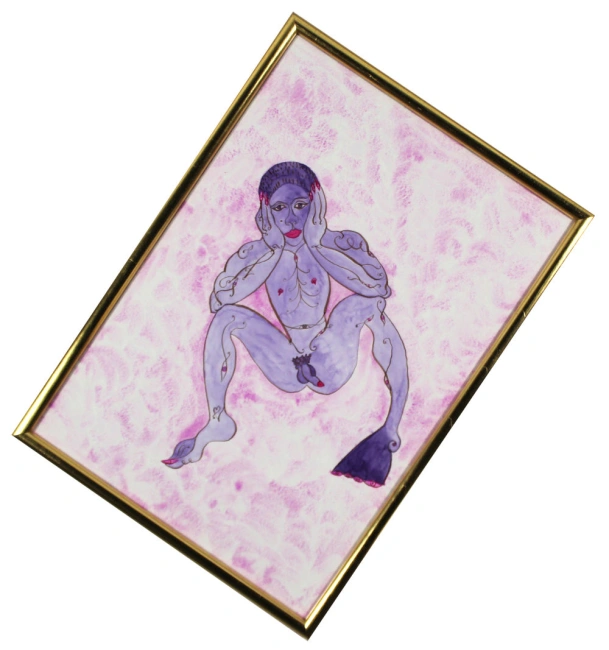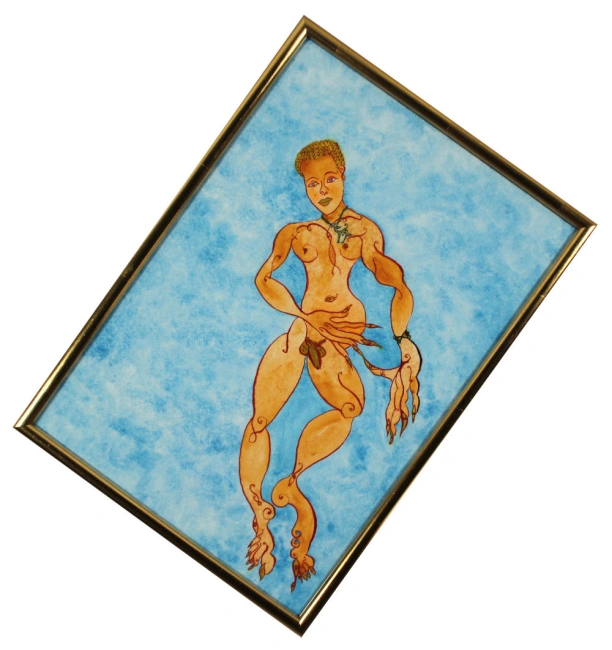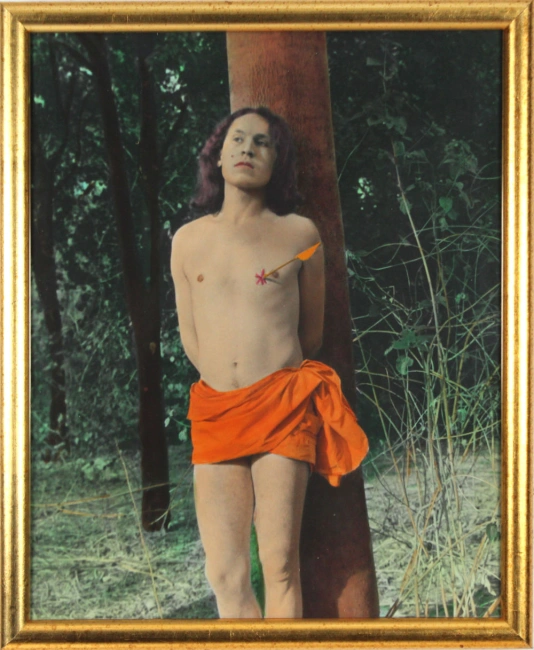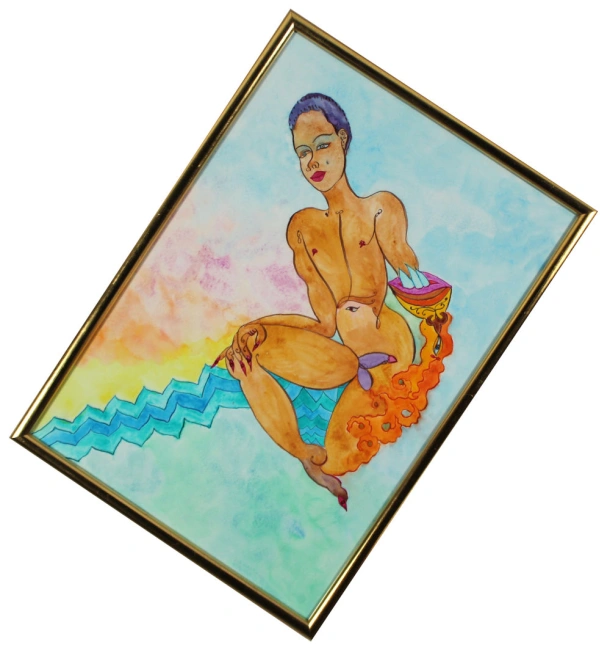Luigi Ontani
Biography
Over the course of his long activity, Luigi Ontani expressed his creativity and poetics through the use of many very heterogeneous techniques: from pleonastic objects (1965-69) elements in little scale to the "room of similitudes" made up of elements cut out of cardboard corrugated. He often anticipated the use of techniques later adopted by other artists, the first black and white super 8 videos were shot from 1969 to 1972. With the work "Ange Infidele" from 1968 Ontani began his approach to photography. From the beginning the photographic works are characterized by some characteristic elements: the subject is always the artist who uses his own body and face to personify historical, mythological, literary and popular themes; the format usually chosen is that of miniature or blow-up, and each work is considered unique. From the end of the sixties there followed "Teofania" 1969, "Fantome", "San Sebastiano nel bosco di Calvenzano, d'apres Guido Reni", "Tentazione", "Meditazione, d'apres de la Tour", "Bacchino" ( 1970) Tell the young man, "Raphael" "Dante" "Pinocchio" (1972), Lapsus Lupus and the diptych "EvAdamo" (1973) "Leda and the Swan" (1974), the crickets and the flying carpets which will be followed by other apres, the first Indian cycle "En route vers l'Inde, d'apres Pierre Loti". The first photographic works are to be considered of great historical importance as they anticipate a phenomenon that will see diffusion and popularity starting from the eighties. At the same time as his first photographic works, Ontani began to perform his first "Tableaux vivant", a term used to indicate a scene where actors in costume remain posed still and silent, as in a painting. From 1969 to 1989 the artist created around 30 tableaux vivants, also in this case anticipating the so-called multimedia installations, very widespread since the nineties, which are based on the mix of various technologies. With the same attitude he has created works of papier-mâché, glass, wood (many masks were made especially in Bali in Pule wood), more rarely he has resorted to bronze, marble and fabric while his ceramic work is very conspicuous, the result of partnership especially with the Bottega Gatti of Faenza and with Venera Finocchiaro in Rome and the terraviva laboratory of Vietri, the pineal masks, the "Ermestetiche" and the latest great works such as "GaneshaMusa", "NapoleonCentaurOntano" are particularly renowned. The experimentation with the mosaic technique developed with the mosaicist Costantino Buccolieri in the execution of the large mosaic panel at the Mater Dei station of the Naples Metro. In all these circumstances Ontani uses technique not as an end in itself, but as an opportunity to experiment with new possibilities and formulate new variations on the themes and subjects that interest him most, his own "transhistorical" journey through myth, the mask, the symbol and iconographic representation. He has exhibited in the main museums and galleries of the world from the Guggenheim to the Center Pompidou, from the Frankfurt Kustverein to the Reina Sofia, and has participated in an impressive number of biennials from Venice to Sydney to Lyon.
In conclusion, we can say that Luigi Ontani is the most original, most innovative, most eccentric and ironic artist in the world art scene from the second post-war period to today. His art is a multifaceted art that ranges from photography, to oil painting, to watercolor, to papier-mâché, to ceramics. to glass
Contributions
On the photographs of Luigi Ontani
The process used by Ontani is long and laborious. The artist starts from photographic sheets of considerable thickness which are a rarity since paper photography is now replaced by digital photography. Ontani sends paper and solvents from abroad. Once the image has been imprinted on the paper, it is immersed in the reagents to fix it. The time taken for this immersion has a tolerance limited to a few seconds, outside of this time the image is either faded or too blackened. Once the photograph is dry, Ontani moves on to watercolor it, working on the entire photo, from the background to the decorative elements, to the clothes, etc. To do this, Ontani uses colored papers from which he cuts small pieces and immerses them in water, diluting them more or less depending on the intensity of the color he wants to obtain. Once this is done he begins to paint on the photograph using very thin brushes. It is therefore a long and complex work, as a miniaturist, which requires technique and an excellent hand, as an excellent painter.
In fact, Ontani always tends to point out that he is first of all a painter.
On Luigi Ontani's masks
The creation of Ontani's masks requires some fundamental steps. Ontani draws inspiration for his masks from a custom he saw on the island of Bali during one of his travels. On this island it is traditional to build anthropomorphic masks that are then used on various occasions, both recreational and religious. The masks are built in Pule wood, which is a soft and light wood. Therefore this wood is easy to work and its ductility allows for the most disparate shapes to be made. This wood is finely smoothed with sandpaper and then painted with natural colors. After each coat of color the surface is worked with increasingly fine sandpaper until a shiny finish like ceramic is obtained. But the first phase is Ontani's conception of the mask through a watercolor drawing, usually of standard dimensions of 52x37 cm. Ontani takes the drawing to Bali and the local artisans, along the lines of the watercolor and following the Master's instructions, carry out the sculpture.
Luigi Ontani - Arte Figurativa
Figurative Art refers to the kind of painting that is simply the representation of the reality that surrounds us or that is supposed to represent the work in its historical context. Often, therefore, the figurative work has a descriptive meaning, of events that happened, or allegorical. Under the Soviet blockade, and partly in Italy, figurative art was very conditioned by ideological constraints as it had to be understood by the masses and aimed at celebrating the successes, usually presumed, of the elites who ruled those countries. In Italy, Renato Guttuso was distinguished as he was able to develop a new language that resulted in works such as La Vucciria and Caffè Greco. Foreign artists include Francis Bacon, Graham Sutherland, Lucian Freud, Otto Dix, George Grosz and others with a very personal interpretation of the subjects and pictorial technique


















































































































